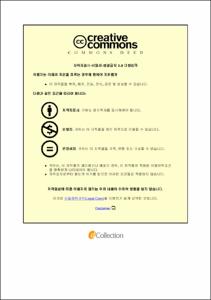연골판 형태에 따른 완전형 외측 원판형 연골판의 특징적인 파열 양상
- Alternative Title
- Complete Discoid Lateral Meniscus has a Distinct Tear Pattern Depending on Meniscal Morphology
- Abstract
- 배경: 기존 문헌에는 완전형 외측 원반형 연골판의 파열 양상 및 분포에 대한 명확한 보 고가 없다. 연구목적: 완전형 외측 원반형 연골판으로 진단을 받은 환자군의 자기공명영상검사(MRI) 와 관절경 영상 자료를 분석하여 원반형 연골판 파열의 빈도, 분포 및 특성을 조사하였 다. 방법: 1998년 1월부터 2022년 12월 사이 단일기관에서 슬관절에 대한 관절경 수술을 시행하고 외측 원반형 연골판을 진단 받은 일련의 환자 1,219명의 1,406무릎을 후향적 으로 검토하였다. 이 중에서 불완전형 외측 원반형 연골판으로 진단받은 무릎 774례와 이전 환측 슬관절 수술력이 있는 무릎 55례를 제외하여, 최종적으로 완전형 외측 원반형 연골판을 진단받은 환자 486명의 577무릎을 대상으로 연구하였다. 환자 평균 연령은 37.4세(범위 5-76세) 였다. 수술 전 촬영한 자기공명영상검사와 수술 중 획득한 관절경 영상 및 사진을 분석하여 연골판 파열을 다음과 같이 분류하였다: 변연부 파열, 수평 파 열, 방사형 파열, 판상 파열, 파열 없음. 또한, 자기공명영상에서 보여지는 형태에 따라 완전형 외측 원반형 연골판을 두 유형으로 분류하였으며, 내부가 전반적으로 두꺼운 ‘블 록형’과 내부과 점차 가늘어지는 ‘쐐기형’으로 명명하였다. 결과: 연골판 형태에 따라 나누었을 때 435무릎(75.4%)은 블록형으로, 142무릎(24.6%) 은 쐐기형으로 분류되었다. 블록형에서는 변연부 파열(66.7%)이 가장 많았으며, 수평 파 열(22.5%)과 방사형 파열(0.7%)이 그 뒤를 이었다. 쐐기형에서는 수평 파열(43.0%)이 가장 흔하였고, 이후 방사형 파열(18.3%), 변연부 파열(11.3%), 판상 파열(5.6%) 순이었 다. 결론: 완전형 외측 원반형 연골판의 주된 형태는 블록형 이었으며, 이 블록형에서는 변 연부 파열이 가장 흔히 관찰되었다. 쐐기형은 이와 유의미하게 다른 연골판 파열 분포를 보였고, 수평 파열이 가장 많았다. 블록형은 변연부 또는 수평 파열을 보인 반면, 쐐기형 은 보다 다양한 양상의 파열이 관찰되었다.|Background: For complete discoid lateral meniscus (CDLM), the pattern and distribution of tears is not well documented in literature.
Purpose: To investigate the prevalence and pattern of meniscal tear types in CDLM using Magnetic Resonance Imaging (MRI) and arthroscopic data from a high-volume tertiary center.
Methods: A consecutive series of 1219 patients (1406 knees) who underwent arthroscopic knee surgery for any pathology and were diagnosed with discoid lateral meniscus (DLM) between January 1998 and December 2022 were retrospectively reviewed. After excluding cases with incomplete DLM (774 knees) and previous history of ipsilateral knee surgery (55 knees), a total of 486 patients (577 knees) with CDLM were evaluated. Mean patient age was 37.4 years (range 5-76 years). Preoperative MRI and intraoperative arthroscopic findings were analyzed to classify tears into the following: peripheral tear (including bucket handle tear), horizontal tear, radial tear, flap tear, and no tear. In addition, preoperative MRI was used to categorize two distinct morphological variants of CDLM: a “block” shaped type with a thick blunt free edge, and a “wedge” shaped type with a tapering sharp free edge.
Results: When categorized by meniscal morphology, 435 knees (75.4%) were classified as block type and 142 knees (24.6%) as wedge type complete DLM. Peripheral tears (66.7%) were the most prevalent in the block type, followed by horizontal tears (22.5%) and radial tears (0.7%). In the wedge type, horizontal tears (43.0%) were observed most frequently, followed by radial tears (18.3%), peripheral tears (11.3%) and flap tears (5.6%).
Conclusion: A block shaped morphology was the predominant form of CDLM. Peripheral tears were the most prevalent in this block type. Wedge type had a distinctly different tear pattern, with horizontal tears being the most common. While block type exhibited either a peripheral or horizontal tear, wedge type was characterized by a greater variation in tear pattern.
- Issued Date
- 2024
- Awarded Date
- 2024-02
- Type
- Dissertation
- Alternative Author(s)
- Kim Ho Yeon
- Affiliation
- 울산대학교
- Department
- 일반대학원 의학과
- Advisor
- 김종민
- Degree
- Master
- Publisher
- 울산대학교 일반대학원 의학과
- Language
- eng
- Rights
- 울산대학교 논문은 저작권에 의해 보호받습니다.
- Appears in Collections:
- Medicine > 1. Theses (Master)
- 파일 목록
-
-
Download
 200000737619.pdf
기타 데이터 / 1.13 MB / Adobe PDF
200000737619.pdf
기타 데이터 / 1.13 MB / Adobe PDF
-
Items in Repository are protected by copyright, with all rights reserved, unless otherwise indicated.